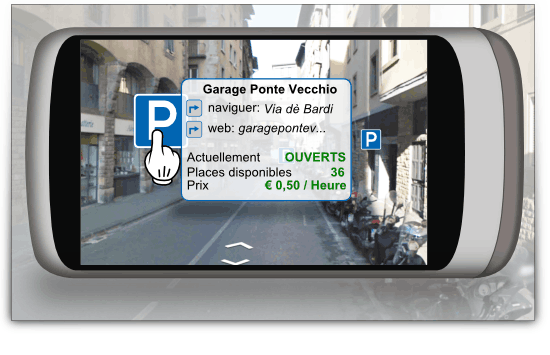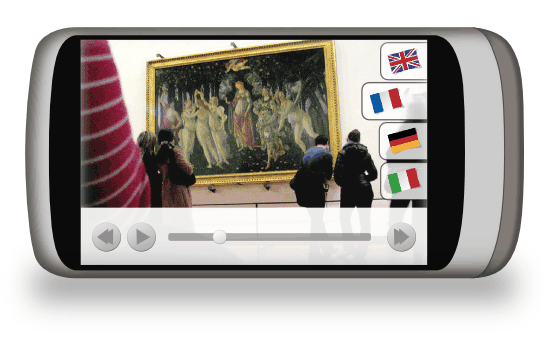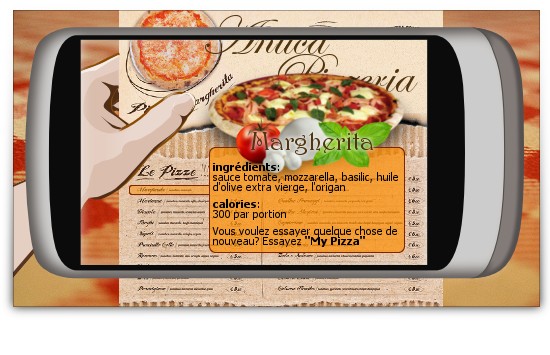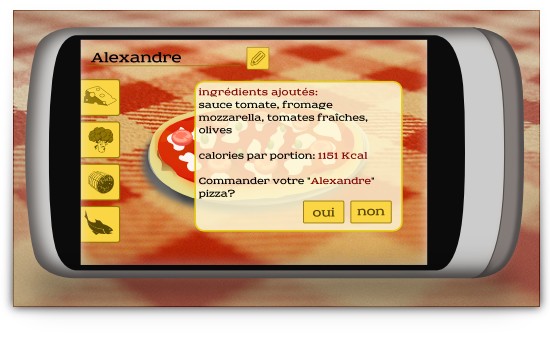Press
GISData increases the management area of FS Eni in Northern ItalyThe dream comes true... Augmented Reality.GISXL - Another barrier surmountedWe are online!!!The dream comes true... Augmented Reality.
Until a few years ago you could only see this in movies, those visionary science fictions like Minority Report, but the dream has come true and it is now reality, an augmented reality.
Augmented Reality, or AR, is a perceptually enriched reality with information that we might not normally detect through our senses. Simply, using augmented reality allows us to see the world through the eyes of a smartphone. In real-time, a smartphone provides us with valuable information about what surrounds us.
Ok, but practically, what do we need it for?
Take a classic case: a French tourist who travels to a city such as Florence. Think for a moment about the smaller and bigger difficulties that he or she will meet during his/her travel, and then think of something that could be able to solve such issues with simplicity.
Our tourist, called Alexandre, who has arrived in Florence by car, will need to find parking. He then activates AR on his smartphone to find the nearest garage, but moreover, he will see how many spaces there are available in that garage, the cost and if there cheaper places nearby.

But the best is yet to come.
Alexandre is in town to visit its arts and landmarks, so he uses his phone to be guided through the streets of the city, and once at the museum, he looks for a tour guide who can take him through the gallery, explaining the most relevant artistic and historical features and facts.
Unfortunately, there are no guides available, and Alexandre doesn't want to lose the opprtunity to gain an insight into the artworks on display. But thanks to AR, this is no longer a problem: Alexandre turns on AR, points at the piece of art and, as if by magic, an audio and video guide explaining the history and characteristics of the masterpiece starts. This can be in the language one prefers, French for Alexandre. The pros of the AR guide is that it can be paused, rewinded and played back, used with headphones, making the visit to the Gallery a unique experience.

After the visit at the Museum, Alexandre feels hungry and would like to experience another Italian masterpiece: pizza. AR suggests nearby restaurants, their times and specialities or menus. Alexandre chooses the closest one, which has a panoramic view and a gazebo to eat outside so to enjoy the splendor of the city. Once seated at the table, he scans the menu with his smartphone, and photos of pizzas appear on the display allowing him to have a look at them before choosing what to eat.

There's even a little "game" showing an empty pizza, and a whole series of ingredients that he can use to top his pizza and he can give it a name before ordering. Extraordinary! This journey will remain forever in his heart.
The story of Alexandre, highlights just some of the possibilities offered by this fascinating technology, which based on the GPS location of a device and / or on the images that it points at with the camera, allows you to view multimedia and / or three-dimensional content, mixing it with reality. This content can be a real added value which can also be printed on paper or posters.

Just think about how little can information be written on a business card, and how much content may instead be related to it, or how much information can be linked to your brand.
Each printed item, recognized by AR, can turn into an immense world of additional information. Furthermore, AR, increases the value of the printouts themselves: for example, a printed guide could be more generic, leaving the insights to AR, making it more durable and lowering costs linked to reprinting.
GISData, leverage AR to study other solutions, such as the AR++ app, that are at the same time useful, attractive, and easy to use, and create a new communication channel between end-users and leading-edge companies. If you feel this philosophy is yours, ask for more information.